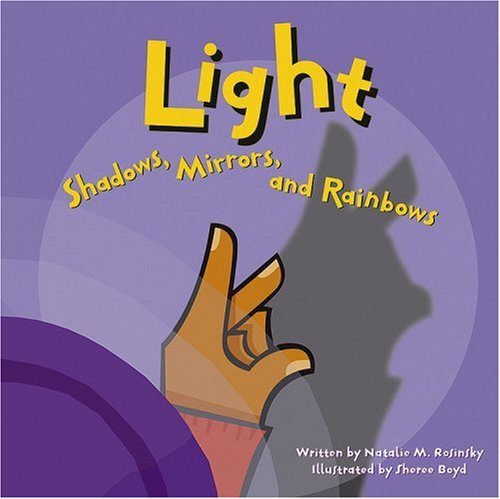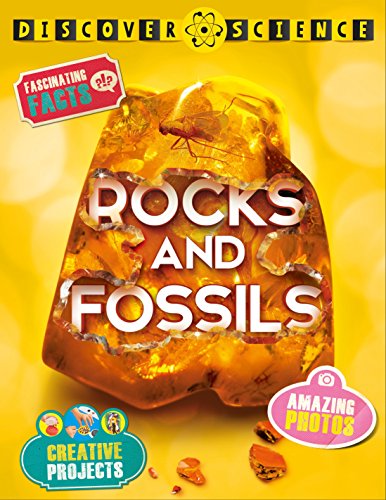-
Discover Science: Weather
Caroline Harris
Paperback (Kingfisher, March 14, 2017)One of the most easily observed yet difficult topics to explain to children is weather. Discover Science: Weather by Caroline Harris introduces young readers to the atmospheric world around them, from sun and wind to climate and temperature. Readers can look at snowflakes in amazing detail, discover the water cycle, learn how rain forms in clouds, explore renewable energy, and take a first look at the devastating effects of pollution and extreme weather. With key vocabulary defined in the glossary, and hands-on projects at the end, this is the perfect introduction to this core science topic.Make science accessible with this essential series that will capture children’s imagination while laying the foundation for future learning. With clear, simple language and a compelling design, Discover Science gives young readers the answers to fundamental questions about animal homes, birds, light and sound, materials and more. O
O
-
Light: Shadows, Mirrors, and Rainbows
Natalie Myra Rosinsky, Sheree Boyd
Paperback (Picture Window Books, Sept. 1, 2002)Learn about the importance of light in our every day lives. Discover how to make reflections, shadows, and rainbows. This is a great nonfiction read aloud book with places to stop to do activities together. If you are looking for clear, concise science books for kids, this is a perfect start! M
M
-
Discover Science: Rocks and Fossils
Chris Pellant
Paperback (Kingfisher, Oct. 14, 2014)Discover Science: Rocks and Fossils by by Chris Pellant is a bright and age-appropriate introduction to the three basic forms of rock, crystals, and fossils. Filled with information about geological processes like erosion, weathering and examples of the many ways we use rock, this book is perfect for both the science classroom and budding geologists alike. The Discover Science series will capture children's imagination while laying the foundation for future learning. With age-appropriate language and an eye-catching design, this series gives young readers answers to fundamental questions about the human body, animals, planet Earth and the Solar System. At the back of each book, science experiments, colorful craft activities and notes for parents and teachers will help every reader get creative as they learn. W
W
-
Motion: Push and Pull, Fast and Slow
Darlene Ruth Stille, Sheree Boyd
Paperback (Picture Window Books, Jan. 1, 2004)Explore the concepts of motion by learning about movement, speed, force, and inertia. N
N
-
Discover Science: Maps and Mapping
Deborah Chancellor
Paperback (Kingfisher, Nov. 22, 2011)Discover Science: Maps and Mapping by Deborah ChancellorMake science accessible with this essential series that will capture children's imagination while laying the foundation for future learning. With age-appropriate language and an eye-catching design, Discover Science gives young readers the answers to fundamental questions about the human body, animals, planet Earth and the Solar System. O
O
-
Rocks: Hard, Soft, Smooth, and Rough
Natalie Myra Rosinsky, Matthew John
Paperback (Picture Window Books, Sept. 1, 2002)The rocks you see everyday can be grouped into different types, like igneous, sedimentary, or metamorphic. Some rocks are actually minerals, and you can even find fossils in some types of rocks. Complete with activities and experiments, this nonfiction science book is perfect for introducing children to geology. N
N
-
Temperature: Heating Up and Cooling Down
Darlene Ruth Stille, Sheree Boyd
Paperback (Picture Window Books, Jan. 1, 2004)A temperature can be hot or cold, and can be measured by a thermometer. Use Fahrenheit or Celsius to take the temperature of items. M
M
-
Sound: Loud, Soft, High, and Low
Natalie Myra Rosinsky, Matthew John
Paperback (Picture Window Books, Sept. 1, 2002)Discover the world of sound in this charming nonfiction tale. Young science fans will learn how sound is created through vibrations that vary in pitch and volume and much more! Alongside bright illustrations, award-winning author Natalie M. Rosinsky delivers fun, fact-filled text for an engaging read-aloud or beginning read-alone. Includes hands-on experiments! M
M
-
Dirt: The Scoop on Soil
Natalie Myra Rosinsky, Sheree Boyd
Paperback (Picture Window Books, Sept. 1, 2002)Dig in to the wondrous world of dirt! In this introduction to soil, young science and nature lovers will discover the components of dirt, how it’s made, and how to maintain healthy soil for the environment. Alongside charming illustrations, award-winning author Natalie M. Rosinsky delivers fun, fact-filled text for an engaging read-aloud or beginning read-alone. Includes hands-on experiments! M
M
-
Composting: Nature's Recyclers
Robin Koontz, Matthew Harrad
Paperback (Picture Window Books, Sept. 1, 2006)Dead leaves, food scraps, and grass clippings for lunch? Small animals, fungi, and bacteria called decomposers turn trash into a tasty compost treat. Learn more about compost and how you can use it in your garden or yard. N
N
-
Magnets: Pulling Together, Pushing Apart
Natalie Myra Rosinsky, Sheree Boyd
Paperback (Picture Window Books, Sept. 1, 2002)Have you ever wondered what makes magnets work? Magnets, by Natalie M. Rosinsky introduces many different kinds of magnets, such as motors, compasses, and Earth’s magnetic poles. Clear text, vivid illustrations, fun facts, and simple experiments make this book a great introduction to magnets. M
M
-
Magnets: Pulling Together, Pushing Apart
Natalie Myra Rosinsky, Sheree Boyd
Library Binding (Picture Window Books, Sept. 1, 2002)Have you ever wondered what makes magnets work? Magnets, by Natalie M. Rosinsky introduces many different kinds of magnets, such as motors, compasses, and Earth’s magnetic poles. Clear text, vivid illustrations, fun facts, and simple experiments make this book a great introduction to magnets. M
M